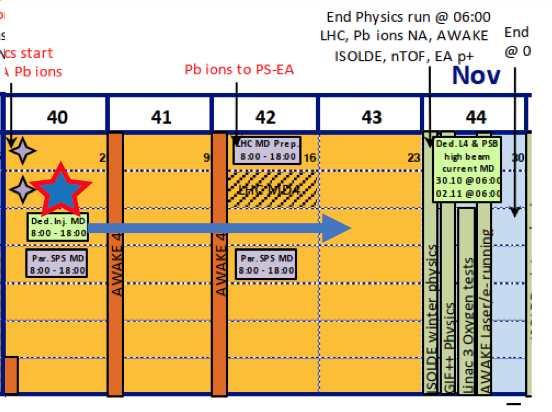
The agenda for this meeting is based upon user schedule 2.1.1, please cf. here. Please note the current injector schedule which contains information about MDs, Technical stops, etc. and can be found here.
Next user meeting:
For week 42 on Thursday October 19th, 2023 10:30 CEST
Meeting room: 874/1-011 (CERN)
Previous EATM meeting from September 26th 2023:
indico.cern.ch/event/1329739/
Check the Page 1 on the machine vistars for most up-to-date information of the beam availability:
https://op-webtools.web.cern.ch/vistar/vistars.php?usr=SPS1
https://op-webtools.web.cern.ch/vistar/vistars.php?usr=CPS
Now, during the LHC ion commissioning period more last-minute changes can happen than usually during the run.
During the rest of the run: Dedicated LHC filling with ions trains in the SPS. The fillings might last around 1 hour and repeat about every 5 hours.
Injector Schedule

Please note that during this periode the MDs migth change on short notice if problems occure in the SPS/LHC.
Wk 41 : No long parallel MD.
Refill of oven in the source (12.10 at 06:00). Beam to beam: ~12h.
No beam to NA.
Friday morning, ~30m without beam for source tune up after oven refill.
Wk 42 : Long parallel MDs (8h-20h) scheduled for Monday.
Dedicated MD (8-18h) moved to Wednesday week 43.
Dedicated Linac4 and PSB high intensity in week 44
Physics programme progressing smoothly with one incident:
Average proton flux is excellent. The mini-TOF (10e10) is highly appreciated by the NEAR experiments. We will need it for 1 week now and potentially after the 19th again.
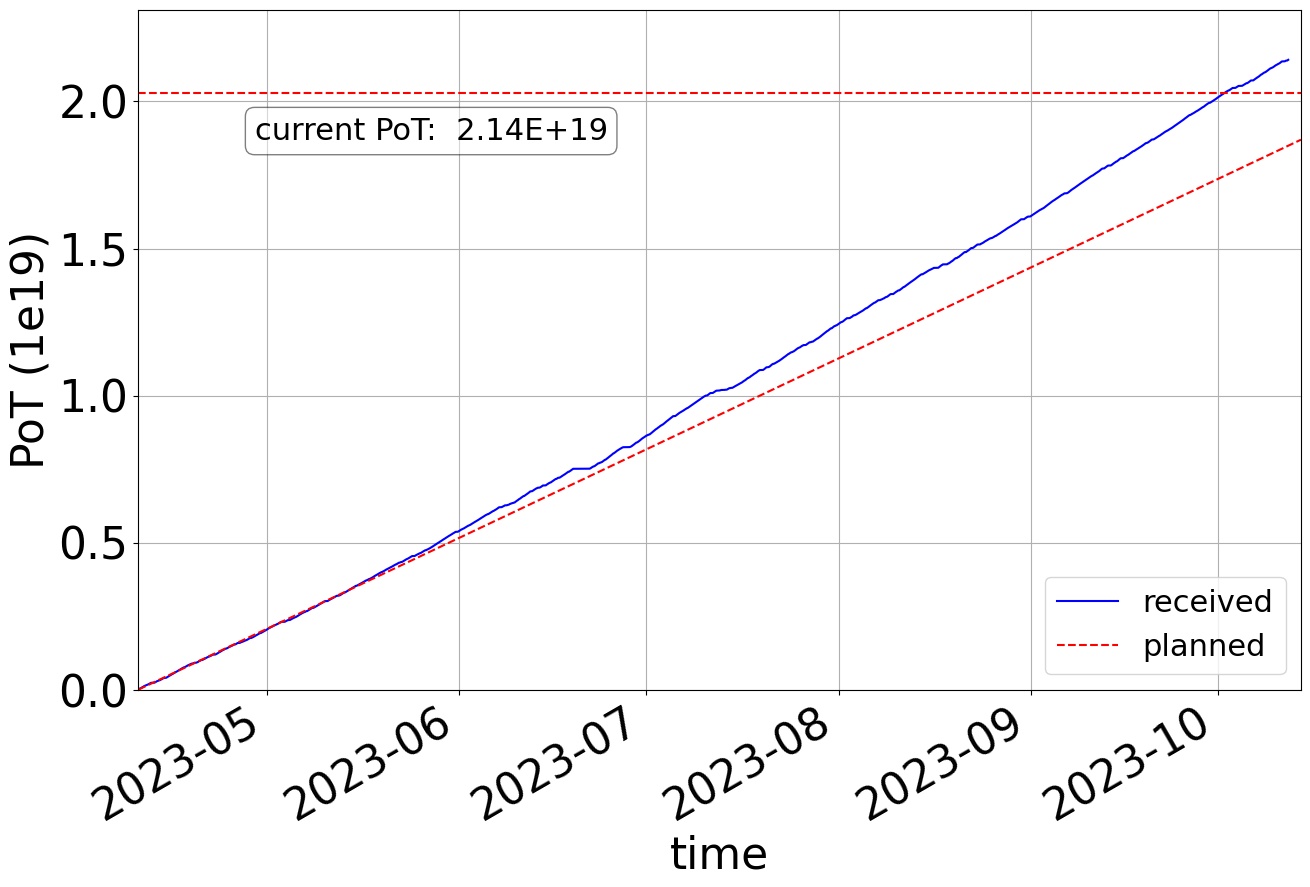
T9: Beam tuned for 3 GeV/c and 15 GeV, 10 GeV, 5 GeV hadrons for ALICE. Good operation.
T10: No issues.
T11: No issues.
Very good week. On Monday (9th) afternoon during ion MD to the EAST DUMP wrong settings were loaded for the F61 QUADS (EAST3 user): this degraded the T8 beam for some hours (~14h30-20h00). Weekly intensity level above the target value (~2.3e16 p/w, see plot below) thanks to the high-intensity EAST_T8 (80E10 pps) run since last Thursday. Beam alignment and center on both X- and Y-axis less good than previous week (e.g. number of spills centered within +/- 2mm): ~93-94%.
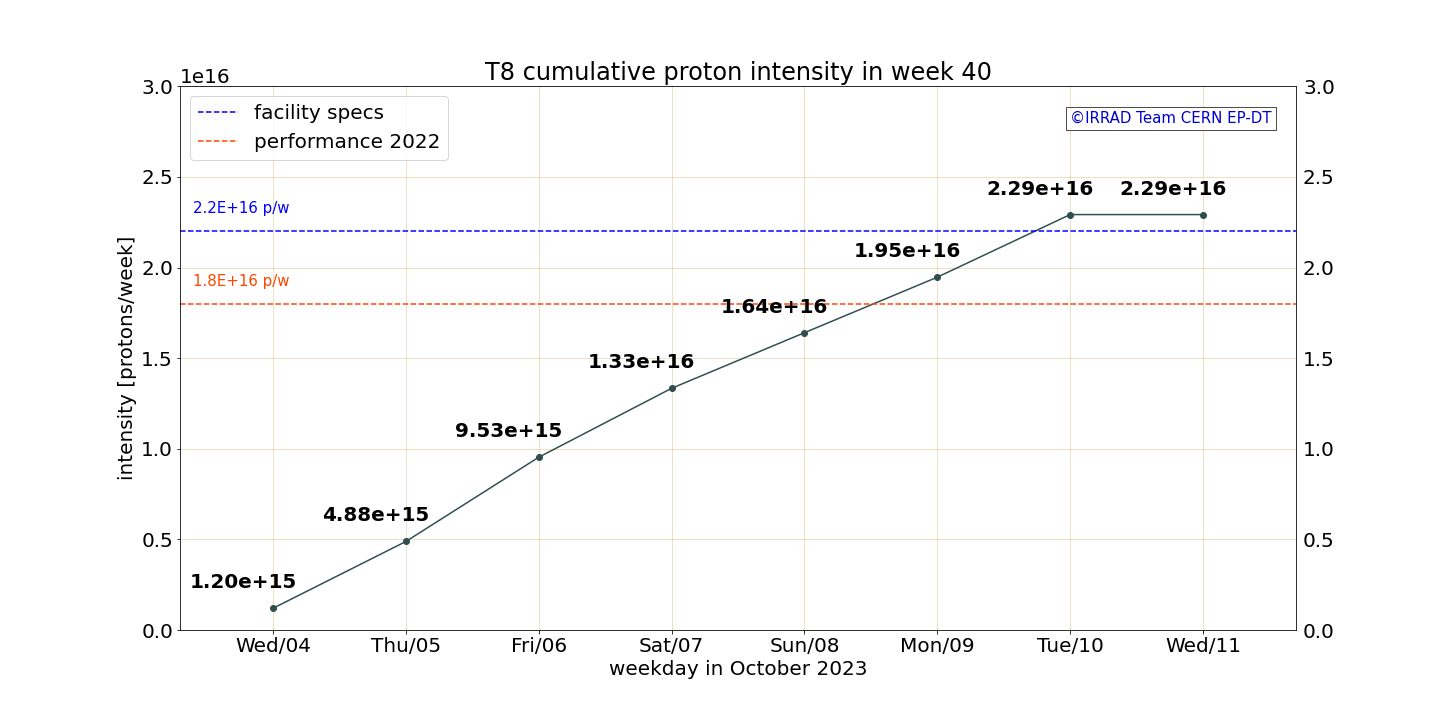
During the access on Wednesday, in IRRAD we exchanged the dosimetry, stop the cryostat and long-term experiments in Zone 3. Restarted CMS Pixel & passive samples for several users for the last steps. In CHARM, the TE/MPE (QPS) and TE/EPC (power converter) setups continue for a second week. We installed a RADNEXT users and test the degraders setup on the Montrac to be used during the CHIMERA ion run.
We run until the end of the proton run and switch to ions next Tuesday 17th in the morning.
The setup of the ion beam will start on Tuesday 17th morning, once the proton run completed and all material removed from the beamline.
Wednesday 18th there will be the need also to access EA1 (in the morning in the shadow of the EA2 access) to install a measurement device on the last T8 beam-stopper. Two other short access slots in EA1 (~40min ventilation time included) during the afternoon will be also required.
We could take some 3 GeV electron data with Cherenkov.
In the following plots are shown with beam on (left) and beam off (right). The beam hit map on Si pad array (72 pads) detector of 325 micron thick is clearly visible. The MIP peak is also visible.
Please refer the plot.
Preparations for SHiP-SBT TB exposure with large 4-cell prototype detector going smoothly:
Holding structure (pre-assembled & tested in Freiburg) successfully arrived at Meyrin TB area. Liquid Scintillator IBC container currently in transit to CERN Prevessin. Other materials to be brought in person early next week.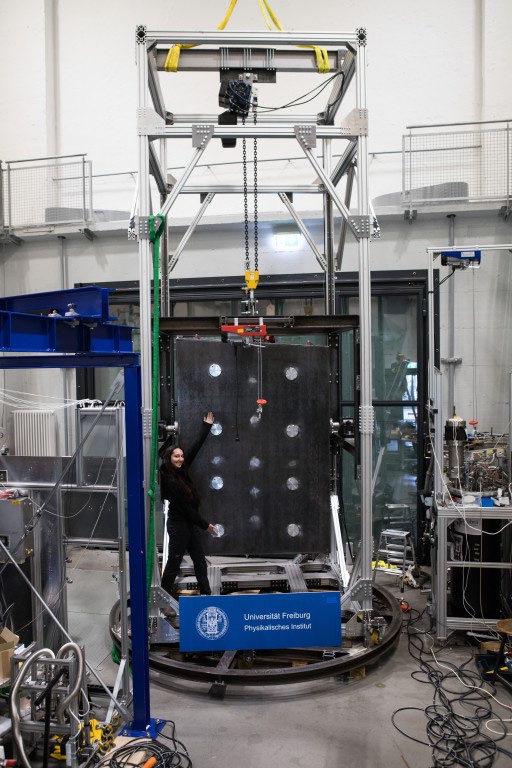
TB measurements planned mostly with muons, plus repeat measurement (w.r.t. 2022 DESY TB exposure) using electrons.
Setup planned to stay inside PS T9 until start of beam 2024 to be the first TB user for a repeat measurement of ‘aged’ detector, taking data with cosmics in the meantime.
Data taking progressing smoothly. During the week the beam was down for a while probably due to problem with the steering: it was promptly fixed.
Sometimes the BHZ027 is down and we need to put it first off (standby), then on and set the current.
Yesterday morning we were in free mode to fix some noise channels in our detectors. Here you can see the T10 beam at -10GeV/c as seen by our fiber tracker upstream (X0-Y0) and downstream (X1-Y1) modules. There are a couple of dead channels so we offset the module a little bit (the position is centered in the middle of the module).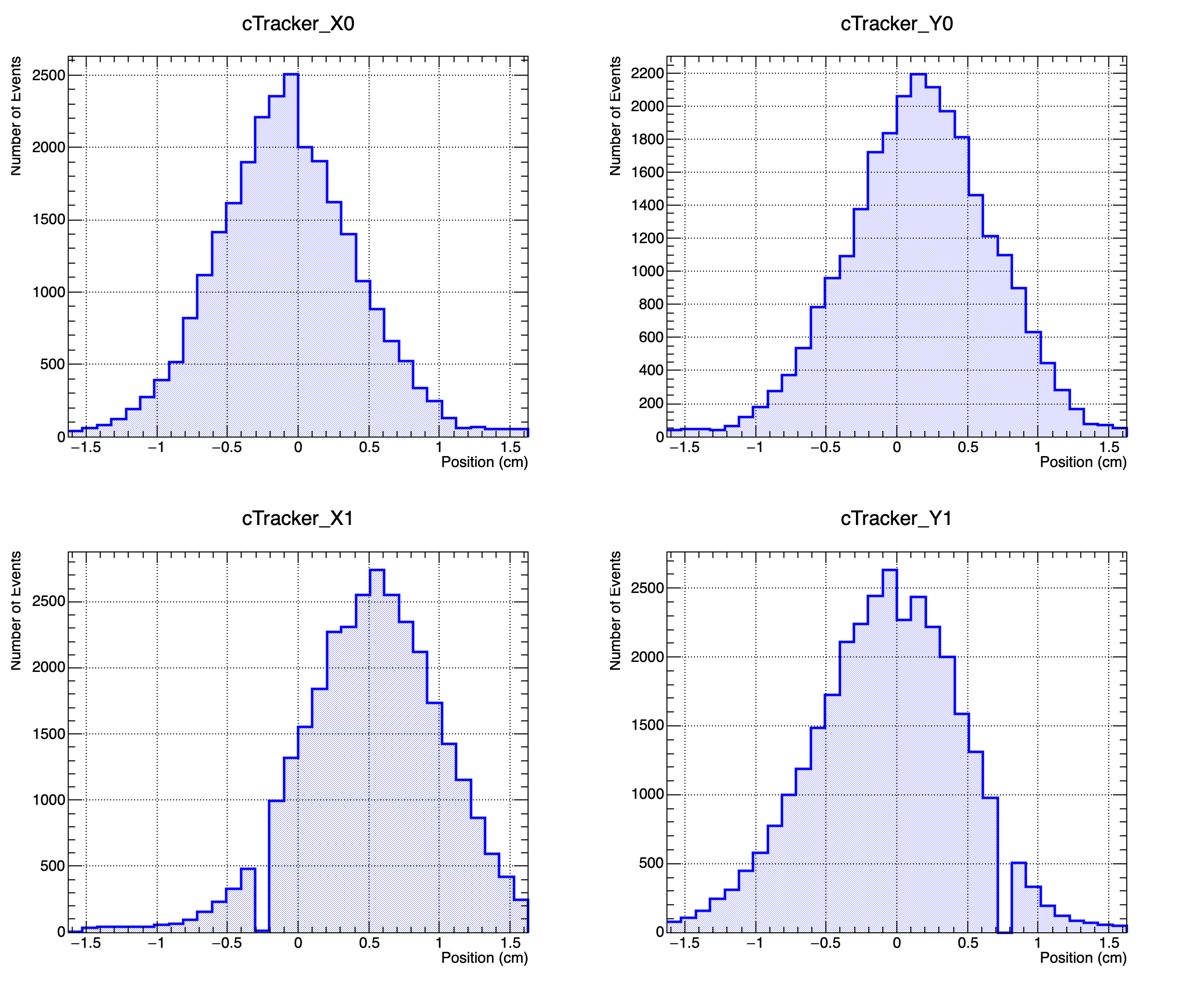
Main: ALICE Timing (Manuel Colocci)
Parasitic: ALICE TOF (Despina Hatzifotiadou)
We will be testing small MRPCs (Multigap Resistive Plate Chambers) for fast timing.
We will move our stuff inside T10 on Wednesday 18 October.
We have arranged for safety inspection in the afternoon of that day.
We are in communication with the relevant people concerning the installation of a DESY table.
We have requested gas.
CLOUD run is ongoing. Some minor gas system issues in the past week, but now continuing normally. Overall, all is well so far.
Monday-Saturday:
Sunday: stated new proton run
Plans
H2: Good operation.
H4: Good operation.
H6: No operation.
H8: Good operation, completed steering and focusing exercise with NA60+ for minimal beam spot size.
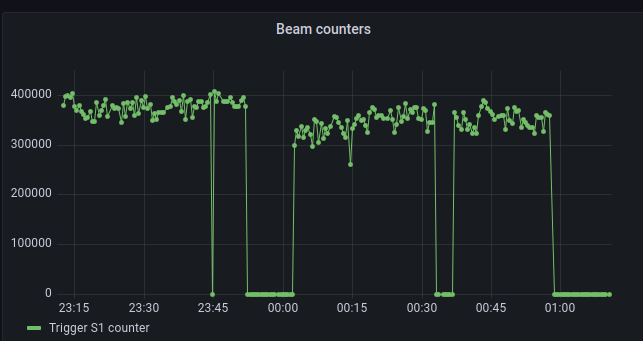
We have taken the data with Mini.PAN spectrometer at various angles with respect to the beam axis (-8 … +8∘
). The data was taken synchronously with all subdetectors of Mini.PAN: ToF scintillators, strip detectors and Timepix3 quads.
During the data taking a few issuses related to one of StripY boards were observed, but the rest of the subsytems worked perfectly fine.
We plan to finish the maintenance of Mini.PAN this week (StripY board replacement, power cable and connector reparations, firmware upgrades) and join Medipix as a parasitic user next week.
We would like to use a DESY table with the plate during our parasitic run instead of the Goliath table if possible.
On behalf of PAN collaboration I would like to thank SPS coordinators, beam physicists and technical crew for extensive help during our beam time as a main user!
We did no change the HERD main setup w.r.t. previous week. We use the Nikos conf file of 330 GeV/Z beam.
Experimental setup
Our goal is to study the response of the HERD subdetectors to high Z particles and measure charge resolution. We see a large halo mainly composed of low Z particles (Z<6), and we are still investigating.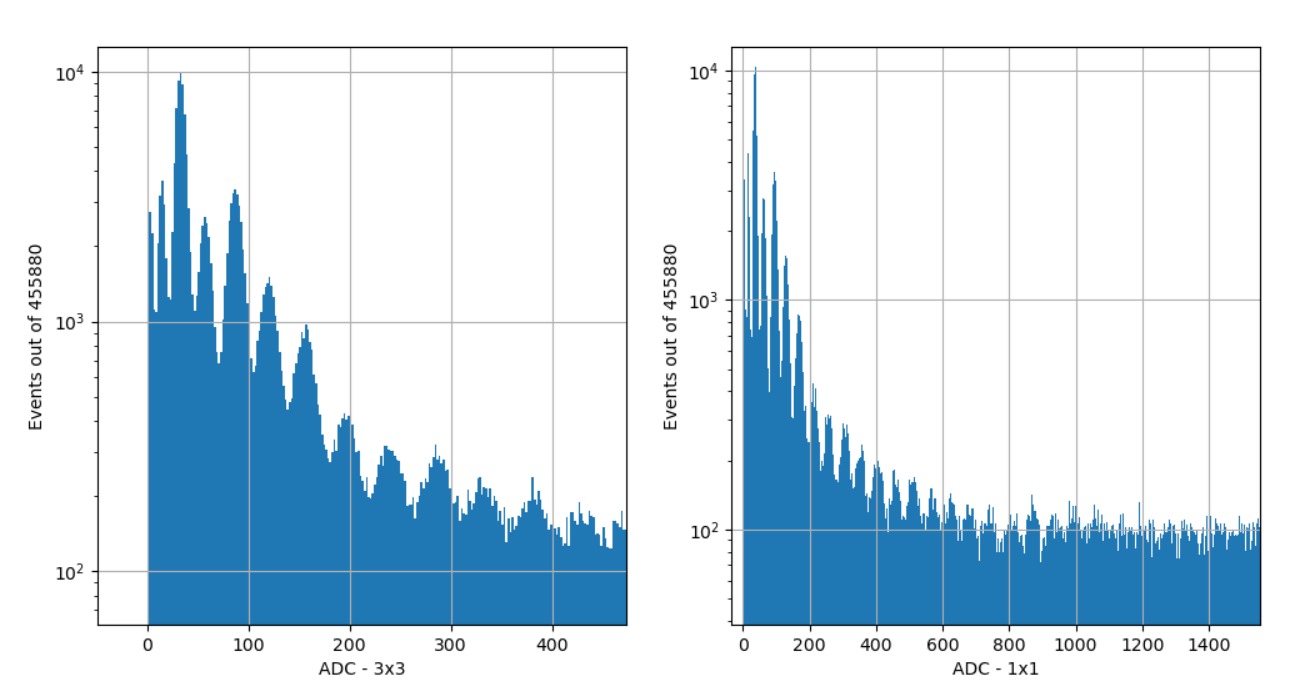
Beam composition detected by a scintillator tile (trigger threshold of about Z=2.5).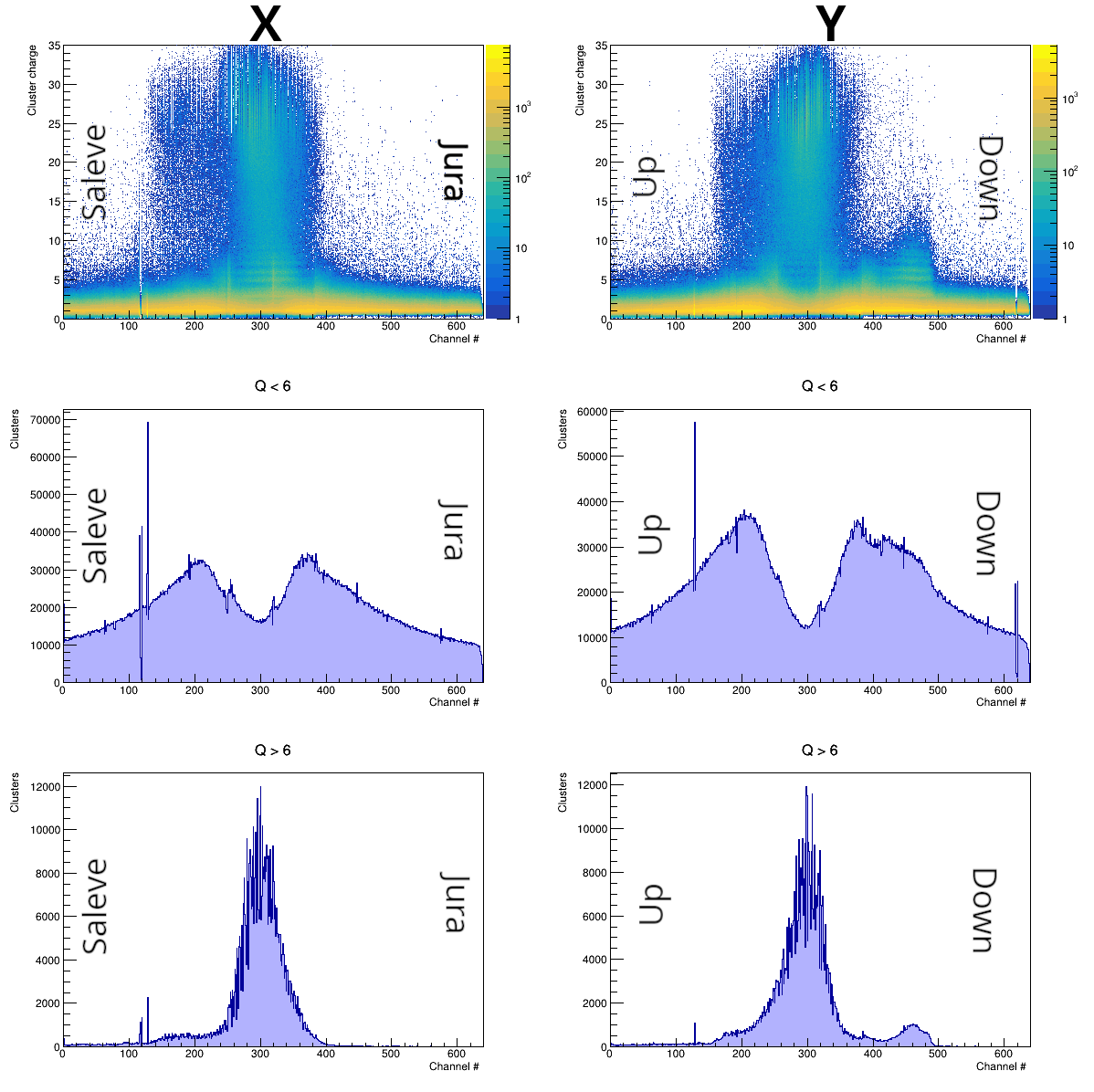
Beam profile from SCD detector
Row 1: Beam profile vs cluster charge in silicon microstrip detectors
Row 2: Beam profile in silicon microstrip detectors for low ions (mostly protons)
Row 3: Beam profile in silicon microstrip detectors for heavier ions
The main contact person next week: Petr Burian (petr.burian@cern.ch)
We will test thin semiconductor boards (Timepix2,3) with sensors made of silicon and SiC. The goal is to study the energy measurement at high input charge. The total thickness of material in the beam is <~ 5 mm. Moreover, we will test software for real-time measurement.
We would like to measure 1-2 d with primary Pb ions, then fragments.
Parameters:
However, we do not have strict requirement on beam parameters. We will adapt and discuss needs with PAN (Daniil).
The VLAST has taken a lot of runs using Ion beams in H8, measuring ions up to Pb with various A/Z = 2.0 - 2.54.
We tested different ions with different intensities and different incident angles, getting clear measurement of the whole charge range of ions up to Pb.
The detector and platform have been moved to 887-R-M84, waiting for shifting to storage room.
Detailed data analysis is still going on for more precise results and better understanding of our detectors.
Many thanks to Michael Lazzaroni and Maarten Van Dijk for arrangement and making the beam files.
Setup consisting of two DESY tables (one with ALPIDE pixels+target and one with MWPC, GEM and uRwell) has been installed
Beam optics studies have been carried on successfully (rather narrow Pb beam spot at 150 GeV)
Detectors performances are under study. Results obtained so far are good
Charged multiplicity studies have started
Higher intensity Pb beam test expected on Friday
Minutes by the respective speakers, edited by E. B. Holzer, M. Jaekel, and M. Schwinzerl